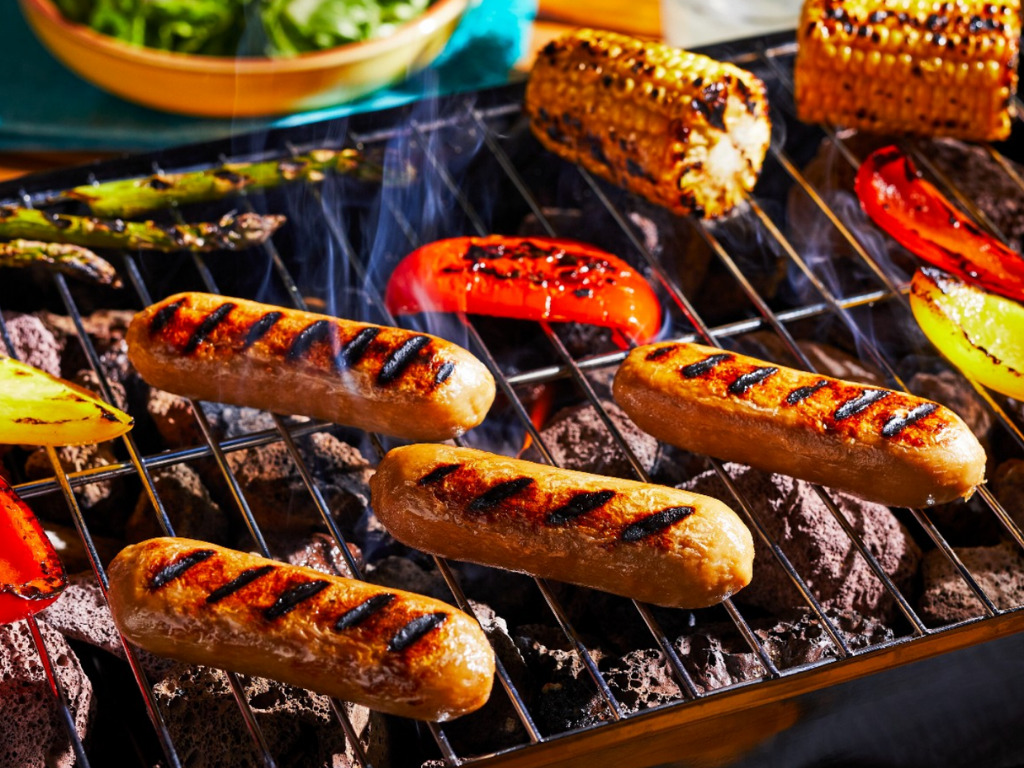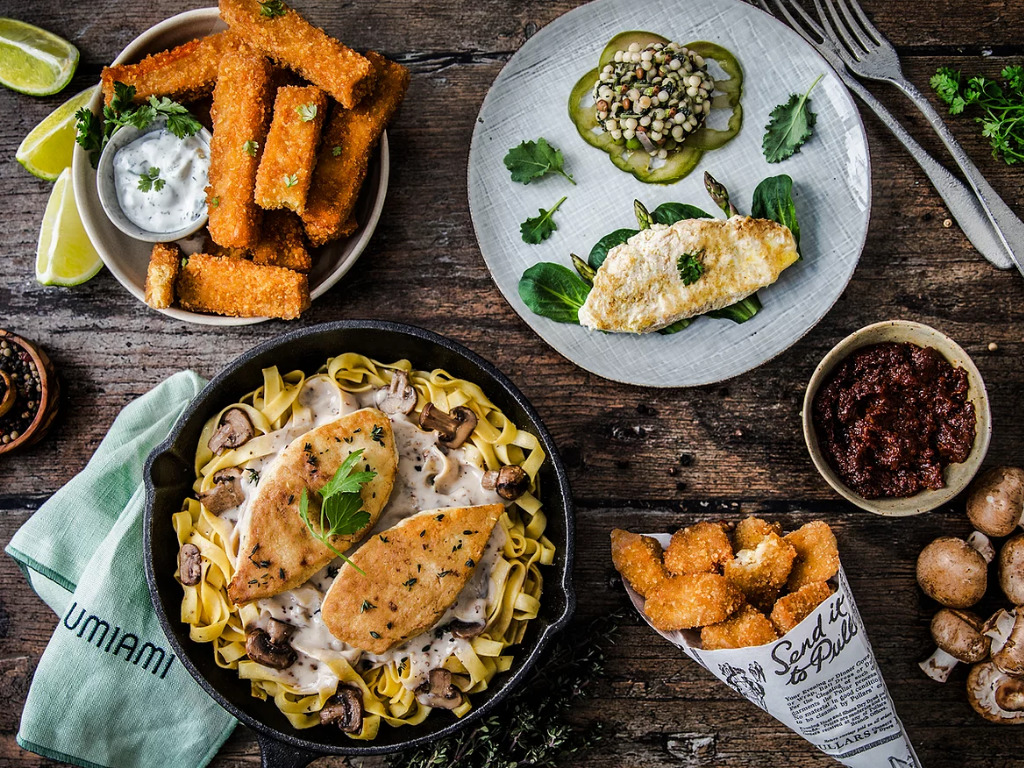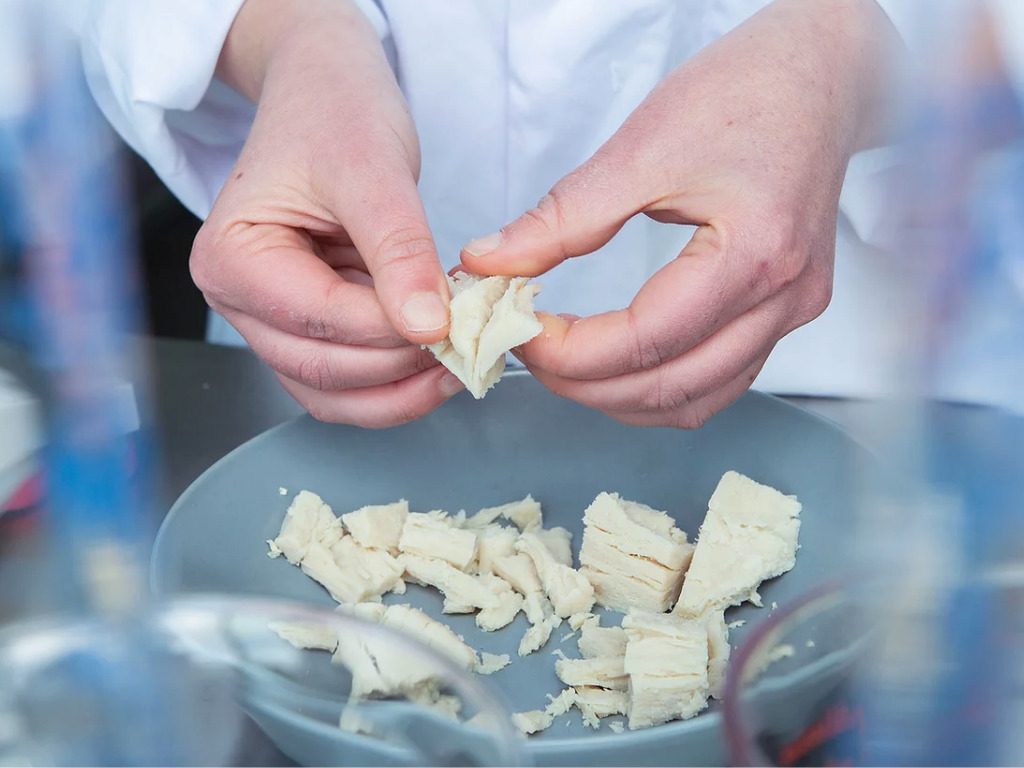4 Mins Read
Long-time vegetarian and vegan meat brand Quorn is exploring new extrusion technology solutions. It wants to create textures and flavours that replicate traditional meat.
Quorn creates its meat from a fermented mycoprotein. However, the company is looking at other protein sources and solutions to develop new products with meatier tastes and textures. It aims to target flexitarians looking to limit their meat consumption. It’s a big market— 42% of consumers worldwide say they’re are flexitarians, driving vegan protein sales.
A Better Vegan Meat?
Quorn’s new challenge will be to make plant-based items with improved nutritional and organoleptic(meaning a food experience that involves all five senses) properties. It worked with the Future Food-Tech innovation Challenge, asking startups to make products that replicate traditional meats.
In an interview with Food Navigator, head of consumer and sensory science at Quorn, Simone Sheehan said that they are specifically looking at replicating chicken. “We all know the flexibility it offers, from having it in a sandwich to the ultimate roast meal where family and friends can come together. What we want to be able to give consumers an amazing food experience that isn’t a compromise. We want to be able to offer a plant-based experience that replicates what consumers can get from chicken today, so they can make the transition to plant-based easy. We want to work with innovators to create replicas of the whole muscle experience: from textures, flavors, the aromas through into the meat-free sector.”

We want to be able to offer a plant-based experience that replicates what consumers can get from chicken today, so they can make the transition to plant-based easy. We want to work with innovators to create replicas of the whole muscle experience: from textures, flavors, the aromas through into the meat-free sector
Simone Sheehan, head of consumer and sensory science at Quorn
Limitations of high-moisture extrusion(HME) tech
Most of the companies in the market use the same kind of high-moisture extrusion to develop long fibres of meat. In this process, plant proteins are heated in a twin-screw extruder. They are then cooled down in a thermal-controlled dye which leads to the formation of fibers. These fibres can be sliced and flavoured to create whole meat cut applications, for instance, a plant-based chicken breast.
This process limits the size of the product to 1 or 1.5 cm due to the thickness of the cooling dye. In addition, it allows only for limited water and fat content which would pose as an issue while making say fish or meats with higher fat content. Even if some add it, the beginning of the process will suffer burns. Hence many companies end up adding it later, and as a result, the centre of the product remains dry.
Read: Behind The Burger: How Scientists Make Plant-Based Foods Look, Taste & Cook Like Meat
Texturisation tech
Out of the several startups that pitched its tech to Quorn, Paris-based Umiami won the pitch. The plant-based meat makers use a new texturisation technology to develop ‘textured’ whole-muscle cuts of chicken and cod.
Umiami’s tech reduces the many steps to produce thick and fibrous whole pieces of meat without any texturing agents like methylcellulose or gum. Extruded nuggets need 30-40 additional ingredients, however Umiami uses only 10.
Its tech can even better replicate the meat, as it creates horizontal, diagonal, and vertical fibres unlike the HME process.
By controlling the direction of the fibers, the thickness of the product, the water and fat content, and the flavouring we can create a wide range of whole-cuts.
Martin Habfast, co-founder of Umiami

Co-founder of Umiami, Martin Habfast said that it is the only company in the world using this process. “We can get up to 8 cm of thickness, five times what HME can do. We also have more room to play with in terms of water and fat content. We mainly use soy, but our process basically consists of aligned fibers out of plant proteins. By controlling the direction of the fibers, the thickness of the product, the water and fat content, and the flavouring we can create a wide range of whole-cuts.”
To scale its tech, the company raised EUR€2.3M(approx.US$2.7M) in seed funding and has hired Guillaume Feneyrou, a 20 year veteran of Nestlé as its industrial director.
Quorn will further help the company by allowing it to leverage its resources. It will provide support to Umiami in terms of research and how to adapt their products to consumers’ likings.
Read: Q&A w/ Philippines Plant-Based Pioneer WTH Foods: “To Market To The Masses, Taste Is Number One”
Lead image courtesy of Umiami.



